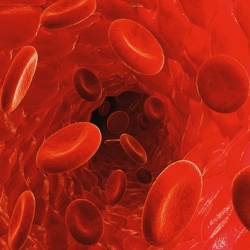
Using ultrasound to bypass the blood-brain barrier (BBB), Columbia University researchers have succeeded in releasing drugs only in the specific area of the brain where they are needed, not in the rest of the body.
The goal is to help treat Parkinson’s, Alzheimer’s, and other neurodegenerative diseases without collateral damage. The BBB is an impassable obstacle for 98% of drugs, which it treats as pathogens and blocks them from passing from patients’ bloodstream into the brain. Using ultrasound (sound whose frequency is higher than the range of human hearing), drugs can administered using an intravenous injection of innocuous lipid-coated gas microbubbles. That technique was perfected by Columbia University scientists, who reported their research in 2011 in PNAS and in 2014 in the Journal of Cerebral Blood Flow & Metabolism.
With this method, ultrasound is focused on a specific region of the brain, causing the microbubbles to oscillate and increase in size and expand. When they reach the critical size of 8 microns, the blood–brain barrier near them opens, allowing the medicine circulating in the blood to pass through.
This technique has been used experimentally for over ten years, but has had a disadvantage: at excessive pressure, the microbubbles can suddenly collapse, so there is no lipid shell to retain the covering of the microbubbles, allowing the contained drug to flow through the blood pool and causing microdamage to the cerebral vessels and elsewhere.
Now, scientists at the Ultrasound Elasticity Imaging Laboratory (UEIL) at Columbia University have taken a major step forward by incorporating a fluorescent molecule called 5-dodecanoylaminofluorescein into the lipid coating of the microbubbles.
This molecule allows the scientists to determine the optimal pressure to prevent bursting of the microbubbles*, according to UEIL physicist Carlos Sierra and lead author of a paper on this new finding published in the current issue of Journal of Cerebral Blood Flow & Metabolism.
So far, the researchers have proven the efficacy of their technique on mice, confirming that this molecule was reaching the brain without affecting other parts of the animal. They also identified the acoustic pressure thresholds at which the substance is guaranteed to safely reach its target in vivo.
“Defining these parameters means we can think about how to transfer the technique to human patients, although it has to be tested on monkeys first,” Sierra explains. “It could be applied to diseases like Parkinson’s, Alzheimer’s, Huntington’s diseases, brain tumors, strokes, multiple sclerosis, and amyotrophic lateral sclerosis, where we expect to see a very significant rise in the efficacy of treatment and a considerable reduction in side effects.”
